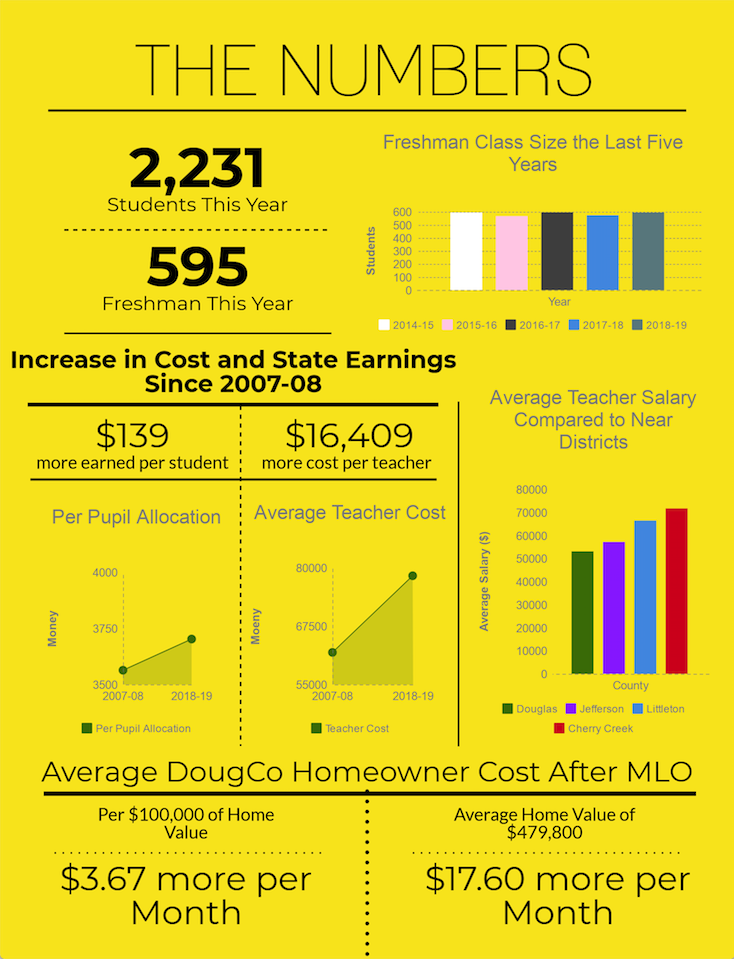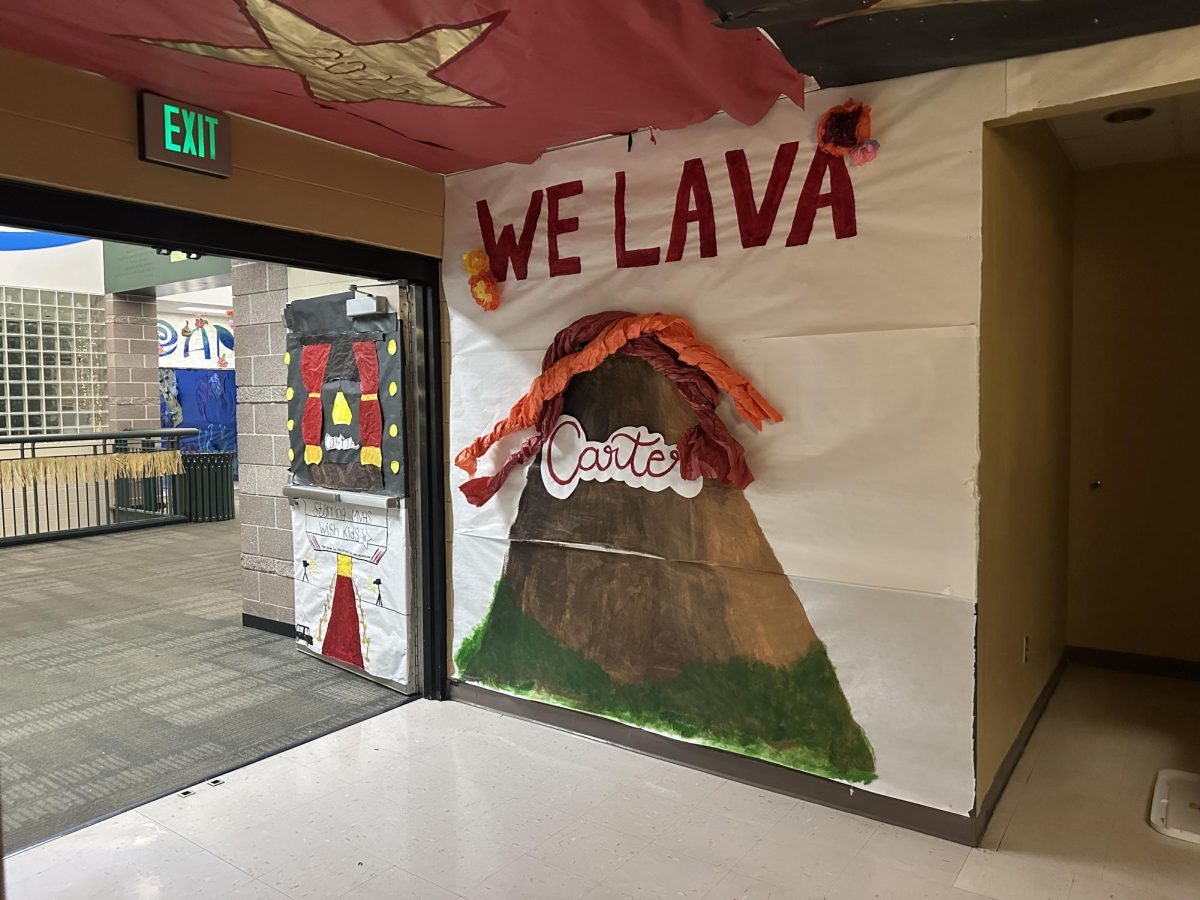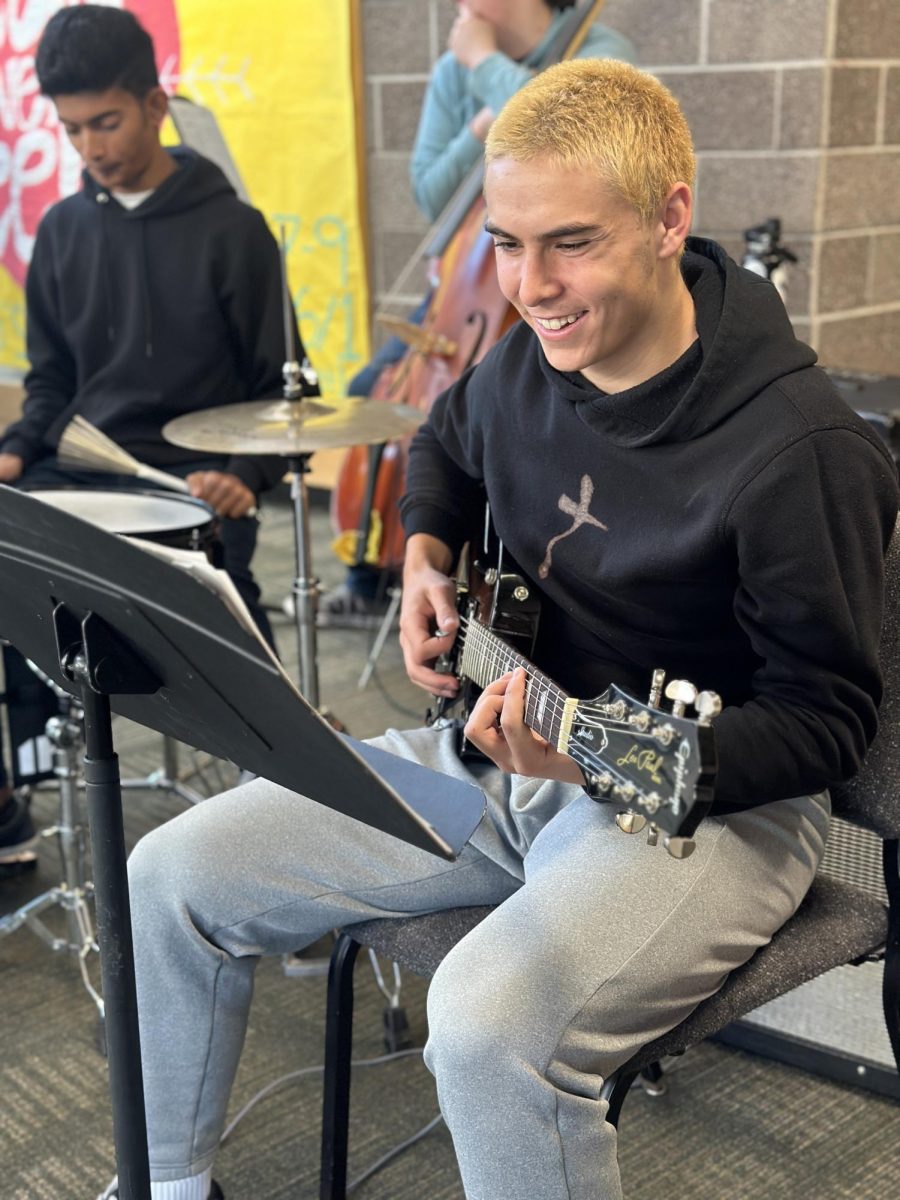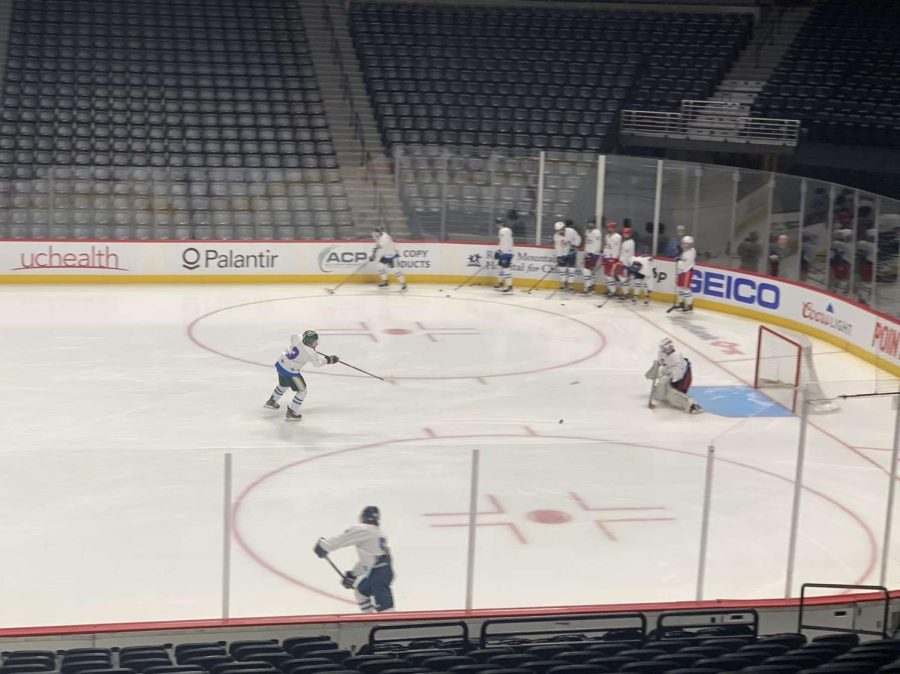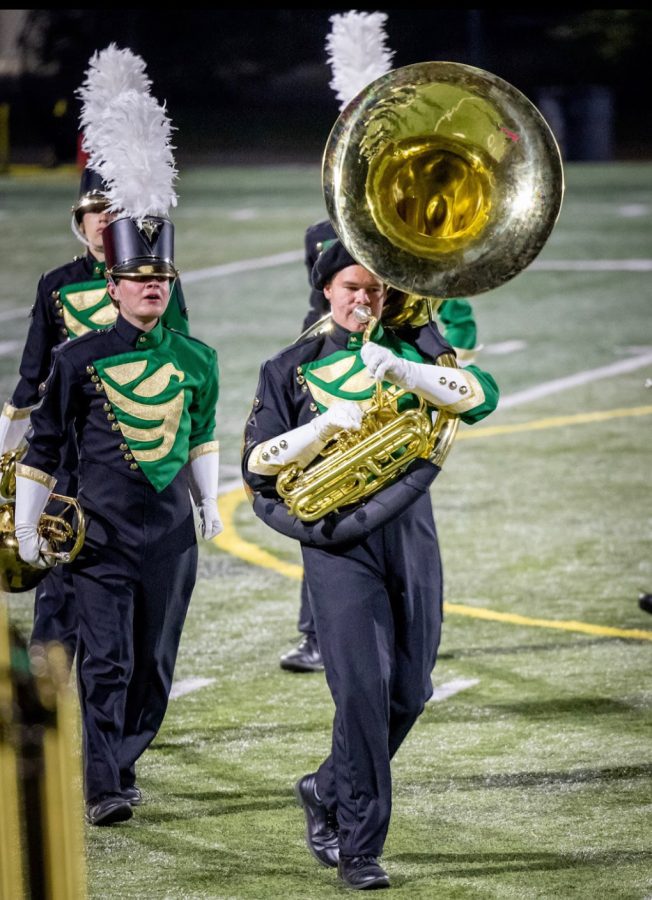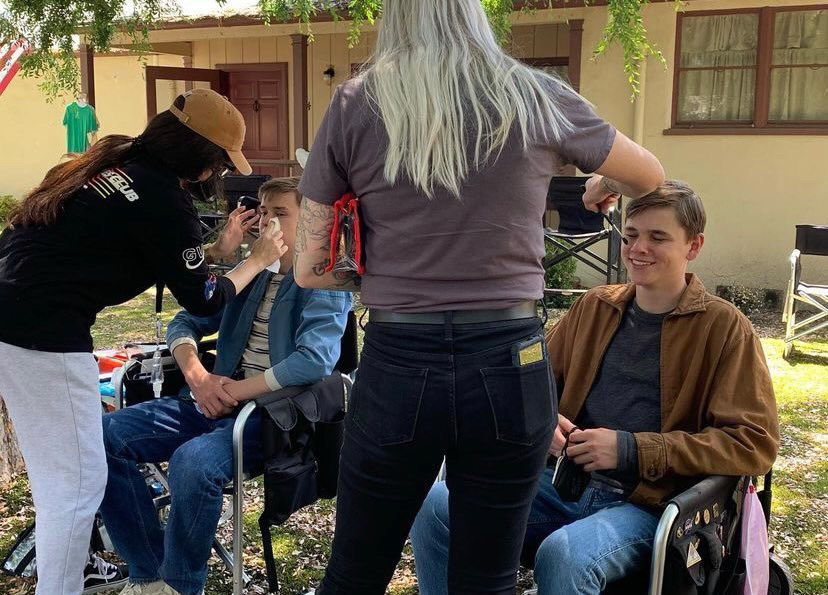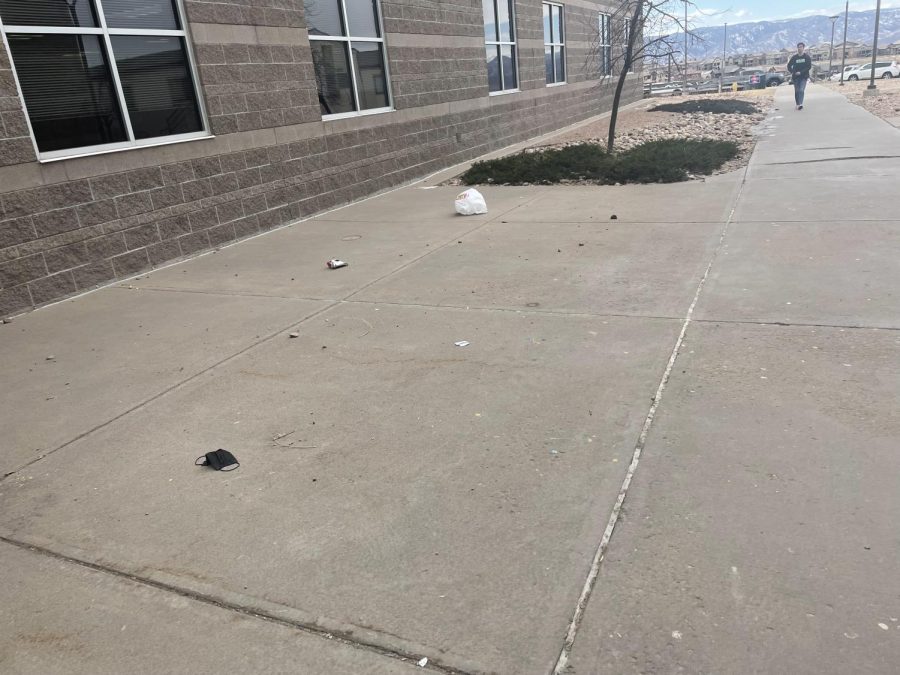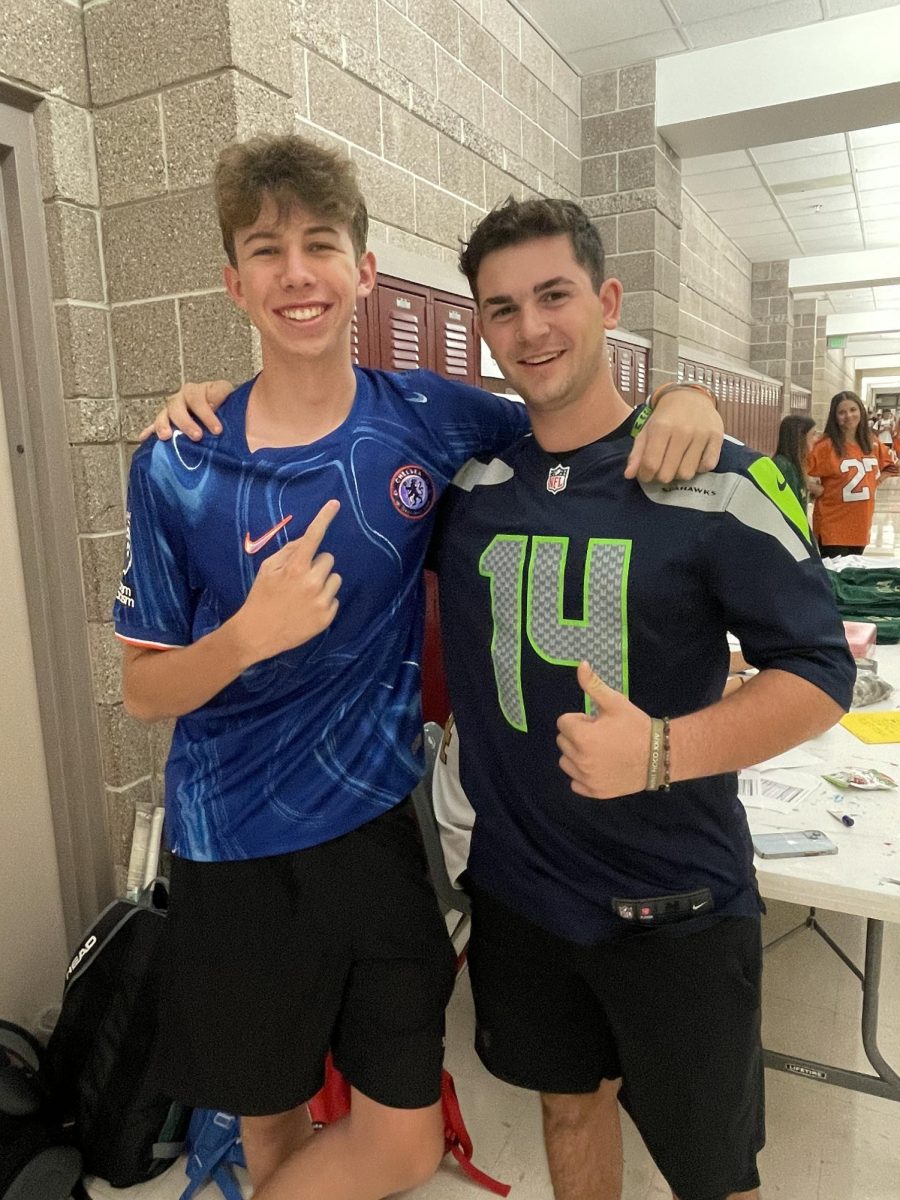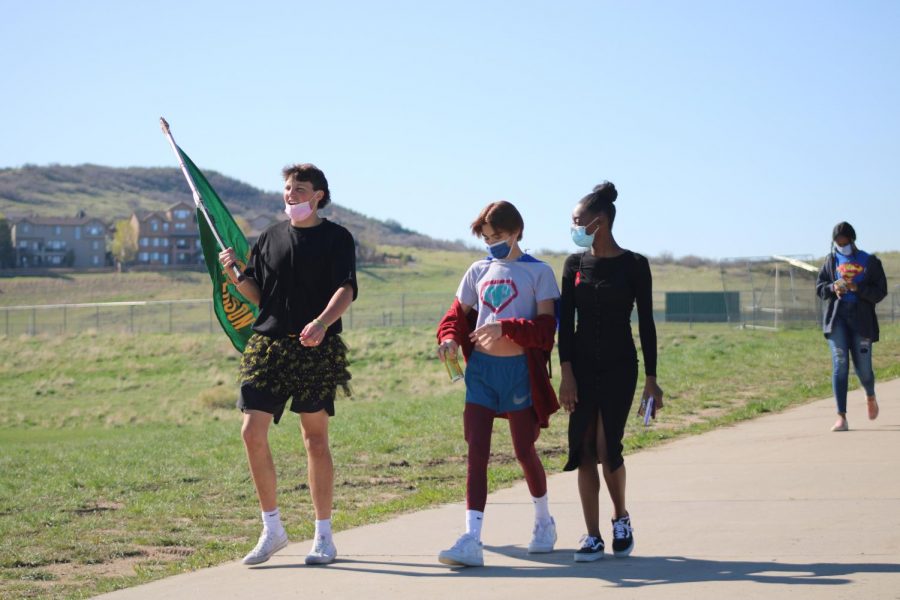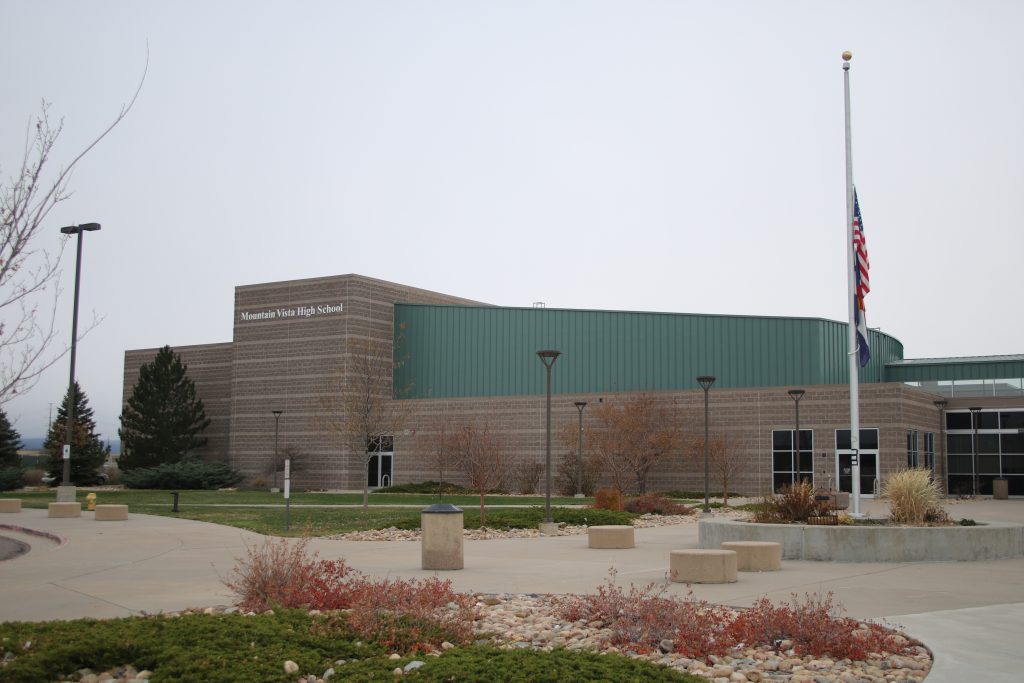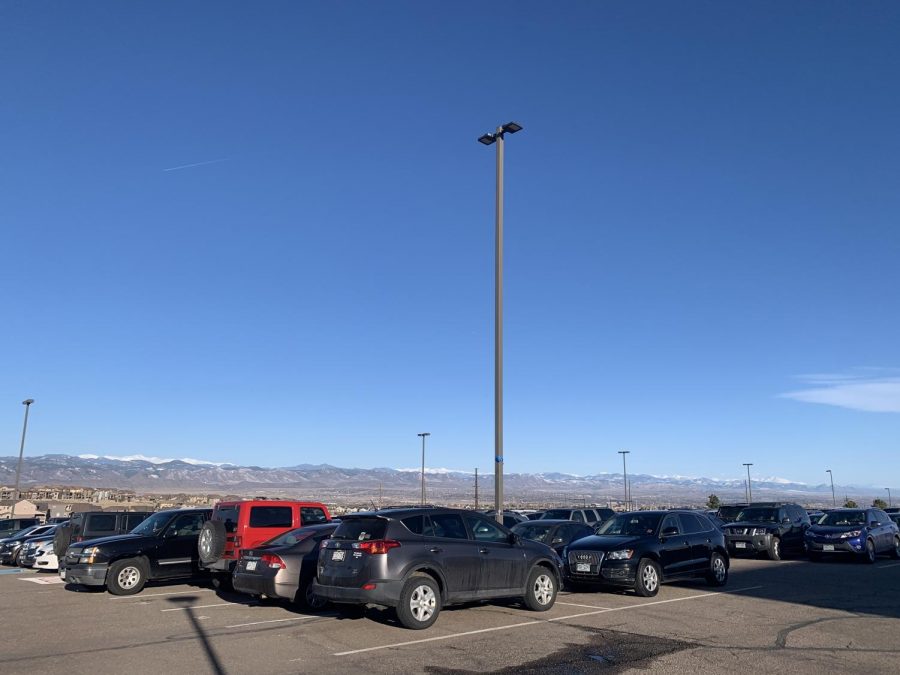Michael Weaver is popular for knowing student names, however, this year with 2,231 students at Vista, it must be getting difficult. With almost 40 kids in a class sometimes, even students have trouble knowing each other’s names. The number of students led to a junior parking pass lottery, and crowded hallways.
“Most of the time I dread walking through the hallways because I know I’m going to have to try to get around so many people, and the parking lot is similar,” senior Kat Jacobsen said. “I feel like you have to be more careful when you’re driving or just trying to get inside.”
This year, the school houses 2,231 students. Growth at Vista has come through the recent incoming freshman classes, of which, three of the last five have been close to 600 students.
Weaver says that there was a big push a couple years ago to get middle schoolers from the BackCountry neighborhood to enroll at Mountain Ridge Middle School (MRMS). “[MRMS principal Shannon Clarke] ended up taking fairly large classes of the BackCountry kids, so they now automatically become ours,” Weaver said.
This bump in numbers, Weaver said, will go down after 2021. “A lot of it is the age of this community, and as communities get older and the families there get older, they don’t have young kids coming through. So we’re at the peak right now.”
Weaver said about 2,400 students is too many for Vista. “We have been pretty selective the last two years [about open enrollment] to anticipate for the incoming classes,” Weaver said.
According to DCSD’s Master Capital Plan, over the last 10 years, district enrollment has increased by 14,614 students or about 28 percent. Excluding charter schools, the district is growing at an approximate 0.5% per year.
DCSD wants to increase their budget to accommodate these numbers. “There has to be money to match the growth,” Weaver said.
The DCSD Board of Education approved a Mill Levy Override (MLO) and Bond for the 2018 Douglas County ballot. School funding comes from two parts. The state government provides some funding, and the rest comes from local property taxes. An MLO is a ballot measure allowing communities to vote for more property taxes being allocated for education.
The DCSD proposes a bond of $250 million and an MLO of $40 million will best address the needs of the district. To accomplish this, the average Douglas County homeowner would have to pay an additional $17.60 per month in property tax.
If passed, the new funding would be used to enhance safety and security systems, replace and upgrade heating and cooling systems, replace roofing, increase teacher and staff pay to be more competitive, and add counselors for students. “Every other surrounding school district has voted for local money to increase what their schools are getting and what their kids are getting,” Weaver said.
According to an email sent to the Douglas County community, the district has not passed an MLO since 2006. Since the 2007-08 school year, the state has provided $139 more per student, and the average cost per full-time teacher including benefits has gone up by $16,409.
If costs increase as such, while funding stays scheduled to decrease, the school will lose money. The resources Vista uses to educate will be spread thinner and thinner. “Already we have had to reduce orders of new and replacement equipment and supplies, and increase lab [group] sizes,” Jody Lanterna-Lewis, the MVHS Science Department Chair, said.
If neither the Bond or MLO are approved, the average homeowner would have a decrease in school property tax by about $67 in 2019, according to DCSD.
“It has to come from local funding recognizing that growth is a part, the age of our building is a part, and the types of teachers and programs we want are all a part of what the community is responsible for,” Weaver said.
“We are currently working with a great deal of equipment that is up to 20 years old, and we have been extremely conservative about replacing things and adding things,” Lanterna-Lewis said. “Having the means to purchase updated safety equipment is also a potential concern.”
If the MLO fails, according to DCSD, school funding would stay flat while expenses continue to increase; transportation would be reduced to minimum levels; unmet capital needs would grow and become more expensive, risking extended building closure during emergency repairs; and DCSD would struggle to recruit and retain quality staff.
On average, DCSD teachers make less than teachers in neighboring districts such as Jefferson, Littleton, and Cherry Creek. “If [teachers] can go across the street to Littleton High School, where they don’t want to be, but make $12,000-$14,000 more a year, people have to do that for their families,” Weaver said.
The MLO, according to the district, would make staff and teacher pay more competitive with neighboring districts. “A lot of the Mill is to make the salaries of our teachers more competitive at least with the surrounding districts, who, over the last 10-12 years have increased while we’ve been flat,” Weaver said.
Weaver manages the school’s budget, maintains the atmosphere of Vista, oversees staff with an incentive to leave for surrounding districts and on top of all that attempts to learn every student’s name.
“I’m currently less than proficient with my freshman class and a lot of my sophomores [names],” Weaver said. “I just try to make little connections in order to remember them.”
